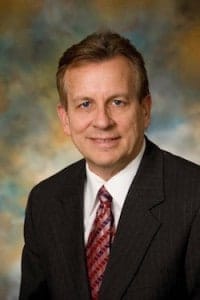Any idea what the leading cause of death is in the United States? No, it isn’t Cancer. Try Heart Disease, specifically Sudden Cardiac Arrest (SCA). Over 1000 people per day fall victim to SCA. It doesn’t play favorites either. SCA can strike any age, any time.
So, it makes sense that an A.E.D. (automated external defibrillator ) should be visible just about everywhere, right? Unfortunately, that’s not the case. A.E.D.s are simple to use, provide voice prompts and give the victim of SCA a better chance of survival. So, why don’t we see more of them besides the mall and the airport?
Education.
Simply put, there is a fear of responsibility and knowledge of how simple an A.E.D. is to operate. Today’s A.E.D. is designed with the layperson or infrequent responder in mind. Although a CPR class, (an important component of SCA survival) will teach you how to use an A.E.D., there is also peace of mind that anyone can turn on an A.E.D. and follow the simple voice prompts guiding you through the whole process.
The “fear-factor” also plays a role. Most responsible companies that sell A.E.D.s provide the training and knowledge of how to use an A.E.D. Once individuals see the simplicity of how they operate, have the opportunity to role play, and have their questions and concerns answered, they embrace the idea of placing an A.E.D. in their organization. In fact, there is a growth of A.E.D.s finally being placed in churches, schools, manufacturing and anywhere people gather. But there is still more work to do. Helping people understand the importance and simplicity of A.E.D.s is paramount.
The other factor that limits mass placements of A.E.D.s is the unfounded notion that SCA victims should rely on our 911 system and the paramedics that serve us. While they are by far our first choice, they can’t always be there in the critical moments necessary for SCA revival. They can be stuck in traffic, out on another call, across town, or any one of many variables. When SCA strikes, you have a 10-15 minute window of saving that victim. Which minute did you find the person? Are you willing to take a chance and wait, or begin the life-saving technique of CPR combined with the availability of an A.E.D.? For every minute that goes by, an SCA victim’s chance of survival goes down 10%.
Still another reason for the A.E.D. void is the fear of liability. Can I get sued? Should I get involved? What if I hurt the victim? All are good questions but all with easy answers. The Good Samaritan Act protects you. The same law that protects you from pulling someone out of a burning car. An A.E.D. will not let you shock someone if they are not in true cardiac arrest. Therefore if the victim is unconscious for another reason, low blood sugar, fainting, or any other reason, the A.E.D. will not let you shock the victim. You simply cannot hurt, but only can help matters. The only time liability comes into play is when an A.E.D. is not properly maintained. Today’s devices have long battery and pad life, however, they must be paid attention to. Nothing could be worse than to implement an A.E.D. program and have the device not work when you need it most, just because no one kept it updated.
The excuses are gone, the reasons removed. A.E.D.s have a place in all public domains. If you know of a company, golf course, health club, school or church that doesn’t have an A.E.D., find out why. Talk to those who have them and hear their stories of success and implementation. You might even owe it to yourself. It could be a matter of life and breath.
Kevin O’Neill is President of Square One Medical, distributor of the Zoll A.E.D. Plus, wound care products, nutritional supplements and more since 1996. Follow Square One on Twitter @MedSupplyGuy, FACEBOOK, and www.sq1med.com or can be reached at 724-779-2278
Throughout the year, our writers feature fresh, in-depth, and relevant information for our audience of 40,000+ healthcare leaders and professionals. As a healthcare business publication, we cover and cherish our relationship with the entire health care industry including administrators, nurses, physicians, physical therapists, pharmacists, and more. We cover a broad spectrum from hospitals to medical offices to outpatient services to eye surgery centers to university settings. We focus on rehabilitation, nursing homes, home care, hospice as well as men’s health, women’s heath, and pediatrics.








